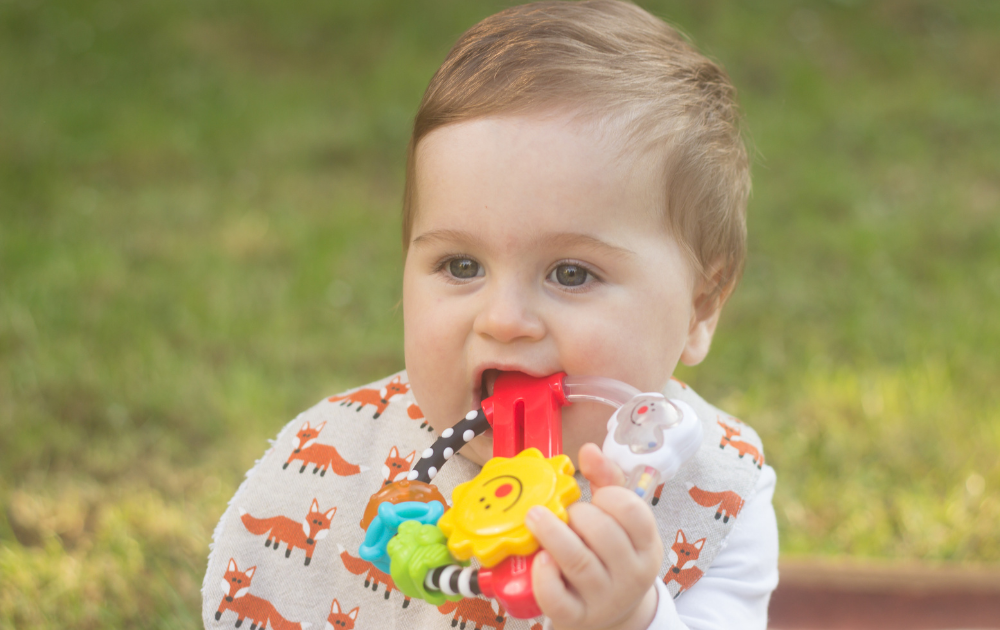Pica, characterized by the persistent ingestion of non-food items, is relatively common among individuals with autism and other developmental disabilities. It is crucial for parents and caregivers to understand the definition, overview, and prevalence of pica in the context of autism.
What is Pica in Autism?
Pica is an eating disorder that involves the consumption of substances that are not considered food. These can include items such as paper, soap, pebbles, thread, or bits of clothing. The behavior is typically not age-appropriate and is unrelated to any cultural or social norms.
In the context of autism, pica is often associated with sensory issues and repetitive behaviors. It is important to note that pica can occur in individuals with or without intellectual disabilities, although it is more prevalent among those with autism and intellectual disabilities.
Prevalence in Autism
Recent studies have shed light on the prevalence of pica among individuals with autism. According to research conducted by the American Academy of Pediatrics, approximately 28.1% of children with autism and intellectual disabilities exhibit pica. In comparison, the prevalence of pica among children with autism but no intellectual disabilities is around 14%. These figures highlight the higher occurrence of pica in individuals with autism compared to the general child population, which has a prevalence rate of only 3.5%.
It is worth noting that pica prevalence estimates can vary depending on the population studied and the severity of the behavior. Some studies have reported prevalence rates ranging from 4% to 26% in individuals with autism and/or intellectual disabilities, with higher estimates found in institutionalized populations. However, these studies often focus on severe cases of pica that require intervention, suggesting that the actual prevalence of pica in the autism population may be higher.
Understanding the definition and prevalence of pica in the context of autism is crucial for parents and caregivers. By recognizing this behavior, appropriate strategies and interventions can be implemented to ensure the safety and well-being of individuals with autism who exhibit pica.

Factors Contributing to Pica
Pica, the repeated ingestion of nonfood items, is a condition that can be observed in individuals with autism. Several factors contribute to the development of pica, including sensory stimulation, nutrient deficiencies, and a lack of understanding of what is safe and edible. Understanding these factors is crucial for parents and caregivers when addressing pica in individuals with autism.
Sensory Stimulation
One factor that may contribute to pica in individuals with autism is sensory stimulation. Some researchers suggest that sensory-seeking behavior drives pica, as individuals on the autism spectrum may ingest nonfood items to explore different textures and tastes. This behavior can provide sensory input and stimulation that individuals with autism may seek. It is important to address sensory needs through appropriate sensory activities and therapies to minimize the occurrence of pica.
Nutrient Deficiencies
Nutrient deficiencies, particularly low levels of iron and zinc, are commonly associated with pica in individuals with autism. Iron deficiency anemia and malnutrition can lead to pica as the body signals an attempt to address significant nutrient deficiencies. Resolving these deficiencies through medication or vitamin supplementation often alleviates the symptoms of pica. Healthcare providers need to monitor nutritional deficiencies through blood tests and address any deficiencies that may contribute to pica.

Lack of Understanding
A lack of understanding of what is safe and edible versus dangerous and not for eating can also contribute to pica in individuals with autism. Children with autism may have difficulty distinguishing between edible and non-edible items or may continue mouthing behavior from infancy. For individuals with autism, pica might be a method to seek sensory stimulation or relieve pain and discomfort. It is important to provide clear and consistent guidance on what is appropriate for consumption and to create a safe environment that minimizes access to nonfood items.
Understanding the factors that contribute to pica in individuals with autism is essential when developing strategies and interventions. By addressing sensory needs, addressing nutrient deficiencies, and providing clear guidance, parents and caregivers can help manage and reduce pica behaviors in individuals with autism. It is always recommended to consult healthcare professionals and behavior specialists for effective interventions tailored to the individual’s specific needs.
Health Implications of Pica
Pica, the repeated ingestion of nonfood items, can have significant health implications, particularly for individuals with autism. It is important for parents and caregivers to be aware of these potential health risks and take appropriate measures to address them. Some of the key health implications of pica in autism include lead poisoning, nutrient absorption interference, and gastrointestinal issues.
Lead Poisoning
One of the major concerns associated with pica is the risk of lead poisoning. Lead can be found in various nonfood items that individuals with pica may consume, such as paint chips, dirt, or certain objects. Lead is a toxic substance that can have detrimental effects on the body, especially on the neurological system. Children with autism are particularly vulnerable to the effects of lead poisoning, as they may have difficulty recognizing and avoiding potentially harmful substances.

Nutrient Absorption Interference
Pica can also interfere with nutrient absorption in individuals with autism. When nonfood items are consumed, they can obstruct the digestive system, preventing the proper absorption of essential nutrients from food. This can lead to deficiencies in vital vitamins and minerals, which are crucial for overall health and development. Regular blood tests and monitoring by healthcare providers can help identify potential nutritional deficiencies caused by pica and guide appropriate interventions.
Gastrointestinal Issues
Another health implication of pica in autism is the potential for gastrointestinal issues. Ingesting nonfood items can result in blockages or infections in the gastrointestinal tract. These blockages can cause discomfort and pain, and may require medical intervention to resolve. Gastrointestinal issues can further contribute to nutritional deficiencies, as the body’s ability to absorb nutrients from food may be compromised.
Parents and caregivers must be vigilant about monitoring and addressing the health implications of pica in individuals with autism. Regular check-ups with healthcare providers can help identify any potential lead poisoning, nutritional deficiencies, or gastrointestinal issues. By addressing these health concerns, parents and caregivers can help ensure the overall well-being and safety of their loved ones with autism.
Managing Pica in Autism
Managing pica in individuals with autism involves several effective strategies that parents and caregivers can use to address this behavior. Key approaches include alerting healthcare providers, making modifications to the home environment, and involving behavior specialists. We will delve into these strategies in detail to effectively reduce and manage pica.

Alerting Healthcare Providers
To effectively manage pica in individuals with autism, it is crucial to involve healthcare providers. Pica can lead to various health issues such as dental problems, lead poisoning, gastrointestinal blockages, nutrient absorption interference, and infections. By alerting healthcare providers, they can monitor for these health problems and consider nutritional deficiencies through blood tests.
Regular check-ups and consultations with healthcare providers allow for ongoing evaluation and intervention to address any underlying health concerns. Through blood tests, healthcare providers can identify any potential nutrient deficiencies and develop appropriate treatment plans.
Home Environment Modifications
Modifying the home environment is an important step in managing pica in individuals with autism. Practical steps include “pica-proofing” the home environment, enriching the child’s environment with other activities, and teaching the child to differentiate between food and non-food items.
Creating a safe and supportive environment involves removing or securing non-food items that may be tempting for the individual. By providing alternative activities and distractions, such as sensory toys or engaging games, the focus can be redirected away from pica behaviors.
Education and consistent reinforcement are key components of managing pica in the home environment. Teaching the child to differentiate between food and non-food items through visual cues, verbal instructions, and positive reinforcement can help reduce the occurrence of pica.
Behavior Specialist Involvement
It is highly recommended to involve a behavior specialist, such as a clinical psychologist or a board-certified behavior analyst, in managing pica in individuals with autism. These specialists have the expertise to develop individualized behavior plans and interventions to help reduce pica behaviors.
Behavior specialists can assist in skill-building, redirection, and developing alternative behaviors. They work closely with parents and caregivers to understand the underlying causes and triggers of pica and develop strategies to address them. By implementing behavior modification techniques and positive reinforcement, behavior specialists can help individuals with autism develop healthier coping mechanisms and replace pica behaviors with more appropriate alternatives.
While limited research exists on pica in individuals with autism, especially children, one study applied the technique of “differential reinforcement of functional communication” to redirect a six-year-old’s pica behavior. By promoting verbal requests rather than immediate grabbing, the child learned to wait for desired items, receiving consistent praise and clean food rewards as reinforcement. This highlights the effectiveness of involving behavior specialists in managing pica behaviors.
Parents and caregivers can take proactive steps to manage pica in individuals with autism by alerting healthcare providers, modifying the home environment, and involving behavior specialists. A comprehensive approach that integrates medical monitoring, environmental adjustments, and behavioral interventions can significantly reduce pica behaviors and support individuals with autism in developing healthier habits.
Theories on Pica in Autism
To better understand pica in autism, researchers have developed various theories to explain this behavior. Two prominent theories are the sensory-seeking theory and the coping mechanism theory.
Sensory-Seeking Theory
According to the sensory-seeking theory, individuals on the autism spectrum may engage in pica as a way to seek sensory stimulation. This theory suggests that these individuals may have a heightened need for sensory input and explore different textures and tastes by ingesting non-food items. Ingesting non-food items may provide sensory satisfaction or alleviate pain and discomfort associated with sensory processing difficulties.
Coping Mechanism Theory
The coping mechanism theory suggests that pica in autism may function as a way for individuals to manage their overwhelming sensory experiences. Autism is often characterized by sensory sensitivities and difficulties in processing sensory information. Engaging in pica behaviors may help individuals with autism cope with these sensory challenges and create a sense of control and comfort.
While these theories provide insights into the potential underlying reasons for pica in autism, it’s important to note that each individual’s experience may be unique. The reasons behind pica can vary from person to person, making it essential to address the specific needs and circumstances of the individual with autism when developing interventions. By understanding these theories, parents and caregivers can collaborate with healthcare professionals and behavior specialists to create effective, personalized interventions.
For comprehensive support, consider our autism services in Maryland at Hello ABA. Our dedicated team is committed to offering tailored ABA therapy to meet each individual’s unique needs.
Contact us today to learn more about how we can assist you.






